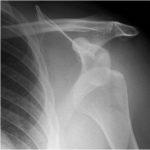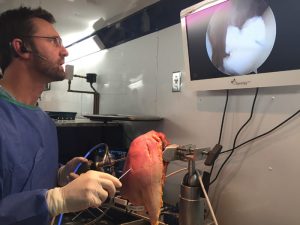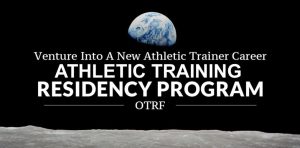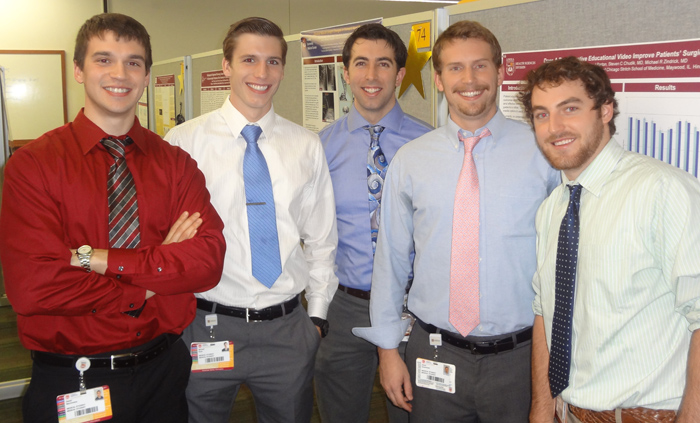 Arthroscopic expert, Dr. Steven Chudik, cites prompt treatment, thorough evaluation and physical therapy as key factors to successful return from shoulder dislocation injury
Arthroscopic expert, Dr. Steven Chudik, cites prompt treatment, thorough evaluation and physical therapy as key factors to successful return from shoulder dislocation injury
Research[ri-ˈsərch, ˈrē-] Scholarly or scientific investigation or inquiry. The diligent and systematic inquiry into a subject in order to discover, interpret or revise facts, theories, etc., in light of new facts, or practical application of information about a particular subject.
An inquisitive nature was the impetus for Dr. Steven Chudik’s career as a fellowship trained and board certified orthopaedic surgeon, sports medicine physician and arthroscopic pioneer for shoulder and knee injuries. It also led him to design and patent special arthroscopic surgical procedures and instruments, and create the Orthopaedic Surgery and Sports Medicine Teaching and Research Foundation (OTRF). Through OTRF, Dr. Chudik conducts unbiased orthopaedic research and provides up-to-date medical information to help prevent sports injuries. He also shares his expertise and passion mentoring medical students in an honors research program, and serve as a consultant and advisor for other orthopaedic physicians and industry research.
To evaluate and improve patient care, Dr. Steven Chudik conducts independent clinical outcomes research. It is important to track our patients’ short-term, as well as long-term, outcomes, and put our treatments to the test. Through critical analysis of our results, we learn about the limits of current treatment standards and push ourselves to discover better alternatives for our patients. See Areas of Research and Development.

To better understand the basic science of anatomy, tissue injury and healing, injury mechanisms and prevention, implant and fixation biomechanics, joint tribology and other orthopaedic and sports medicine basic science, Dr. Steven Chudik collaborates with Loyola University of Chicago, Hines V.A. Musculoskeletal Biomechanics Center, Argonne National Laboratory, and multiple other partners in industry. Exploring hypotheses in the laboratory broadens our basic orthopaedic knowledge and helps Dr Chudik extrapolate and bring new ideas into patient care. There have been many innovations in patient care that were first discovered in the laboratory. See Areas of Research and Development.
Dr. Steven Chudik continually innovates to create new technology, surgical techniques and improve patient care. He also collaborates worldwide with other leaders in the orthopaedic technology industry. Surgeries provide Dr. Chudik with an endless source of ideas to create new, safer, less invasive, and more effective surgical procedures, surgical instruments and implants. Several of his patent works are the direct result of these pioneering endeavors. See Areas of Research and Development.
Once a month, Dr. Steven Chudik, board certified orthopaedic surgeon, sports medicine physician and founder of the Orthopaedic Surgery and Sports Medicine Teaching and Research Foundation (OTRF), hosts a one-hour sports medicine conference for athletic trainers, physical therapists, orthopaedic clinicians, medical students and physicians. Topics range from discussions about published research to interesting patient cases and radiographic diagnostics. Contact us to learn how you can participate remotely and receive continuing education credits.
Keeping individuals active and healthy is at the very core of the Orthopaedic Surgery and Sports Medicine Teaching and Research Foundation’s (OTRF) mission. To support that, ORTF produces Active Bones, an e-newsletter that provides tips on injury prevention, nutrition, sports conditioning and research.
Through OTRF, Dr. Steven Chudik hosts several educational opportunities for athletic trainers…

As a Top Doctor in orthopaedics and a pioneer in orthopaedic shoulder and knee arthroscopic surgery, and sports medicine, Dr. Steven Chudik is a noted researcher and clinical assistant professor at Loyola University of Chicago. That educational affiliation enables Dr. Chudik to mentor medical students through the university’s STAR Program (Student Training in Approaches to Research). Each year, Dr. Chudik advises and instructs a select number of honor students on research projects from the beginning brainstorming phase through the submission and publication of their technical papers to professional journals and associations.

Early in his medical training, Dr. Steven C. Chudik, founder and president of the Orthopaedic Surgery and Sports Medicine Teaching and Research Foundation (OTRF), saw the need for up-to-date medical information and unbiased research on the prevention and treatment of shoulder, knee and sports injuries to the musculoskeletal system—joints, cartilage, tendons, ligaments, etc. Through OTRF, Dr. Chudik makes unbiased research possible and already developed several surgical procedures and instruments to improve treatments for shoulder and knee injuries such as anterior cruciate ligament (ACL) repair in growing children, rotator cuff tears and shoulder dislocations.
See more about OTRF Research >>>
The SOAR Program, (Students interested in Orthopaedics And Research) is an educational curriculum designed to expose interested and motivated undergraduate and pre-med students to orthopaedic surgery and research. The one-year program, and a ten-week summer rotation, allow participants to explore the fields of clinical practice and medical research under the supervision of Dr. Steven Chudik, founder and president of OTRF and a board-certified orthopaedic surgeon and sports medicine specialist. SOAR participants gain valuable experience to help them make career decisions and support their application to medical school.
Internships, either for a semester or the summer, provide marketing/communications collegians with an opportunity to write and produce e-newsletters, videos, social media campaigns, blogs, feature articles, testimonials, presentations, etc. Contact us for more information about this hands-on educational opportunity.